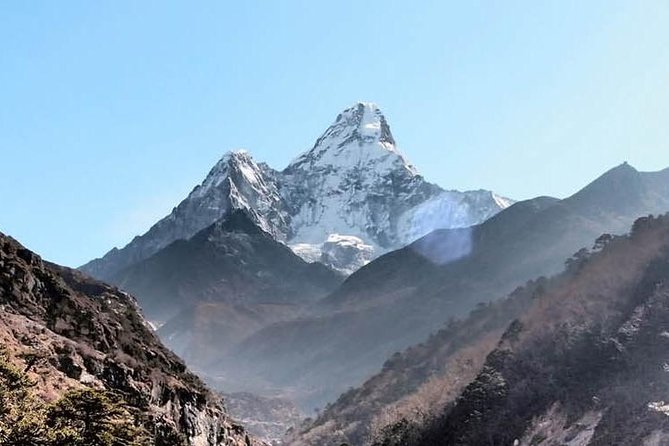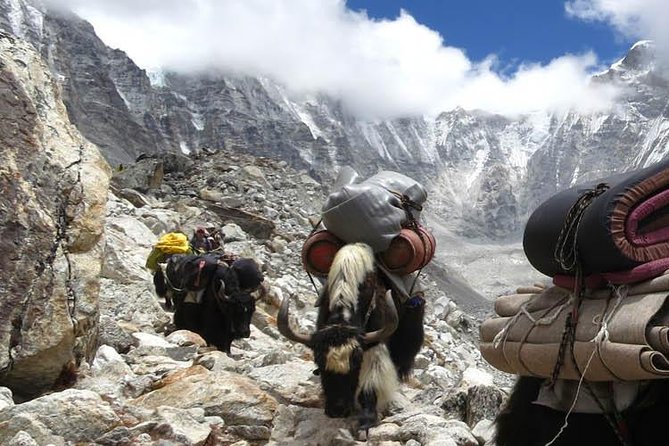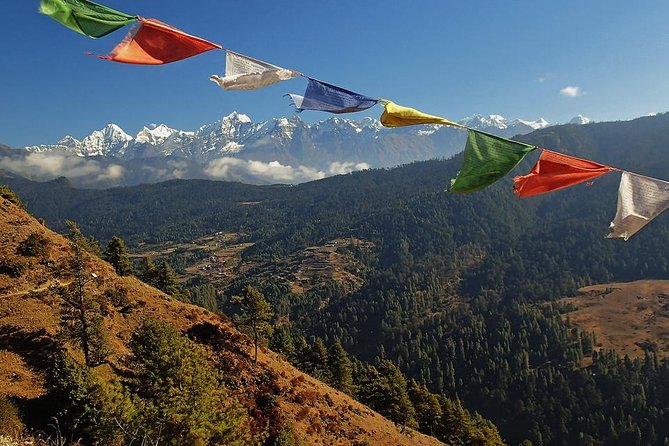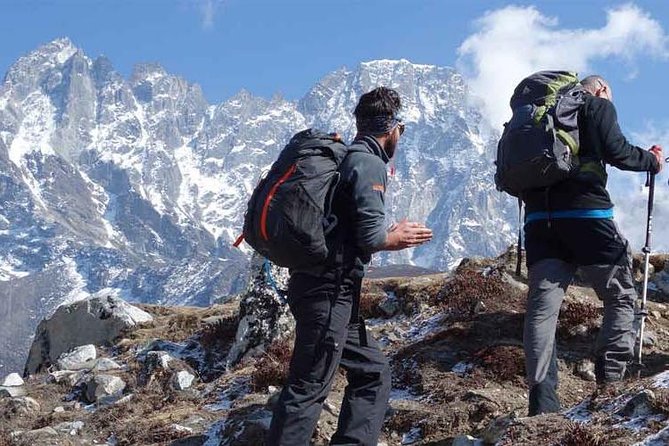Everest Panorama Trek Mt Everest View Trekking
In the realm of adventure seekers, the Everest Panorama Trek stands as a beacon of aspiration, offering a glimpse into the ethereal beauty of the Himalayas. As trekkers navigate the trails towards the renowned Mt. Everest, they are met with a spectacle that transcends mere sightseeing.
The journey unfolds like a carefully crafted tapestry of nature’s wonders, weaving together moments of challenge and triumph amidst a backdrop of unparalleled magnificence. But what lies beyond the physical exertion and scenic vistas is a narrative waiting to be unraveled, a tale of perseverance and discovery that beckons all who dare to venture into its embrace.
Key Points
- Breathtaking views of Mt. Everest and the Himalayas.
- Immersion in Sherpa culture and traditions.
- Comfortable lodging with local hospitality.
- Expert guides for a safe and enriching trekking experience.
Trekking Itinerary

The trekking itinerary for the Everest Panorama Trek offers a detailed exploration of the breathtaking views and cultural experiences along the route.
The acclimatization schedule is strategically planned to help trekkers adjust to the altitude, ensuring a safe and enjoyable journey.
Scenic viewpoints dot the trail, providing stunning panoramas of the majestic Himalayas, including close-up views of Mt. Everest.
Along the way, trekkers will have the opportunity to enjoy local traditions and cultural experiences, interacting with Sherpa communities and gaining insight into their way of life.
From traditional tea houses to monasteries nestled in the mountains, the trek not only showcases the natural beauty of the region but also delves into the rich tapestry of Sherpa culture.
Best Time to Trek

For ideal trekking conditions on the Everest Panorama Trek, consider the seasonal variations in weather patterns before planning your adventure. The best time to trek is during the pre-monsoon (spring) season from March to May and post-monsoon (autumn) season from late September to November. During these periods, the weather is relatively stable with clear skies, making it ideal for enjoying the stunning views of Mt. Everest.
Proper gear is essential to tackle the varying weather conditions, including warm clothing for chilly mornings and nights, as well as rain gear for unexpected showers. It’s crucial to allow time for altitude acclimatization to prevent altitude sickness and ensure good health throughout the trek.
Required Permits and Documents

Before embarking on the Everest Panorama Trek, trekkers must ensure they have the necessary permits and documents to comply with local regulations. Permit regulations require trekkers to obtain a Sagarmatha National Park entry permit and a Khumbu Pasang Lhamu Rural Municipality permit. These permits aim to regulate the number of visitors and ensure the sustainability of the region.
Trekkers should also have their passports with at least six months validity remaining. It’s advisable to make multiple copies of important documents like passports, permits, and travel insurance. Document preparation should include arranging travel insurance that covers high-altitude trekking and emergency evacuation.
Trekkers are responsible for keeping these documents safe throughout the journey to present them when required.
Accommodation and Meals
Opt for cozy lodges nestled amidst the picturesque Himalayan landscape, providing warm shelter and hearty meals after a day of trekking on the Everest Panorama Trek. When it comes to accommodation and meals on this trek, trekkers can expect the following:
-
Meal Options:
- Enjoy a variety of local and international dishes to refuel your energy.
- Vegetarian, vegan, and gluten-free options are available upon request.
-
Lodging Choices:
- Stay in comfortable lodges with basic amenities like beds, blankets, and hot showers.
- Experience the hospitality of local Sherpa communities along the trail.
These lodging options and meal varieties add to the overall experience of the Everest Panorama Trek, ensuring a comfortable and satisfying journey.
Experienced Trekking Guides

Nestled amidst the breathtaking Himalayan landscape, the Everest Panorama Trek ensures trekkers are accompanied by experienced guides who bring a wealth of knowledge and expertise to enhance their journey.
These guides possess exceptional expertise in mountain navigation, ensuring the safety and enjoyment of all participants. Their familiarity with the terrain, weather patterns, and local culture adds a layer of depth to the trekking experience, allowing trekkers to immerse themselves fully in the awe-inspiring surroundings.
Whether it’s providing insights into the region’s history, pointing out rare flora and fauna, or offering tips for acclimatization, these guides play a crucial role in making the trek a memorable and enriching adventure. With their guidance, trekkers can navigate the trails with confidence and make the most of this extraordinary journey.
Packing Essentials
Ensuring you have the right packing essentials is crucial for a successful and comfortable Everest Panorama trekking experience. When preparing for the trek, consider the following items to tackle various weather conditions and ensure you have the necessary trekking gear:
-
Layered Clothing: Pack lightweight, moisture-wicking base layers, insulating mid-layers, and waterproof outer layers to adapt to changing weather conditions.
-
Sturdy Footwear: Invest in quality hiking boots with good ankle support and a sturdy sole for the rugged terrain.
-
Backpack: Opt for a comfortable and durable backpack with adequate space to carry essentials like water, snacks, and extra layers.
-
Accessories: Don’t forget essential accessories like a hat, gloves, sunglasses, and sunscreen to protect yourself from the sun and cold temperatures.
Safety Measures and Tips

When embarking on the Everest Panorama trek, hikers must prioritize safety by adhering to essential measures and tips to navigate the challenging terrain effectively.
Safety precautions are crucial, including acclimatizing properly to the high altitude, staying hydrated, and recognizing signs of altitude sickness.
It’s recommended to trek with a knowledgeable guide who can provide assistance and guidance in case of emergencies. Hikers should familiarize themselves with emergency procedures, such as contacting local authorities or guides in case of any mishaps.
Carrying essential items like a first aid kit, extra food, and warm clothing is vital for unforeseen circumstances.
Being prepared and cautious can significantly enhance the trekking experience while ensuring a safe journey in the Himalayas.
Trekking Challenges and Rewards
Trekking in the Everest region presents both formidable challenges and unparalleled rewards for adventurous hikers seeking an unforgettable experience in the heart of the Himalayas.
Challenges:
- Mental preparation: The high altitude and rugged terrain demand mental resilience.
- Physical endurance: Long treks and steep ascents test the limits of one’s physical stamina.
Rewards:
- Scenic beauty: Breathtaking views of snow-capped peaks and serene landscapes await at every turn.
- Cultural immersion: Interactions with local Sherpa communities offer a glimpse into their rich traditions and way of life.
Embarking on this journey requires a balance of mental preparedness and physical strength, but the rewards of experiencing the stunning beauty and vibrant culture of the Everest region make it all worthwhile.
Common questions
What Is the Maximum Group Size for the Everest Panorama Trek?
The maximum group size for the trek is limited to ensure a personalized experience and minimize environmental impact. Trekking restrictions aim to maintain the natural beauty of the area, provide safety, and offer participants a meaningful journey.
Are There Any Age Restrictions or Fitness Requirements for This Trek?
There are no specific age restrictions for this trek, but participants should have a moderate level of fitness. It is recommended to be in good physical condition to enjoy and complete the journey comfortably.
Can I Hire an Additional Porter or Guide During the Trek if Needed?
Yes, travelers can hire an additional porter or guide during the trek if needed. Porter assistance is available for carrying gear, while guide availability ensures support and navigation. This flexibility enhances the trekking experience for adventurers.
Are There Any Cultural Considerations or Etiquette I Should Be Aware of While Trekking in the Everest Region?
When trekking in the Everest region, it’s essential to respect local customs. Be mindful of cultural considerations like dress modestly, greet locals with a "Namaste," and ask before taking photos. Engage in respectful interactions to enhance your experience.
Is There a Recommended Tipping Etiquette for the Trekking Guides and Porters?
Trekking in Nepal typically follows local customs for tipping guides and porters. Tipping is a sign of appreciation for their service. While not mandatory, it’s customary to offer gratuity based on quality and length of service.
Last Words
Embark on the Everest Panorama Trek for a once-in-a-lifetime adventure in the majestic Himalayas. With breathtaking views of Mt. Everest, experienced guides, and meticulously arranged details, this trek promises unforgettable memories.
Explore the beauty of Nepal’s landscape, learn about the serenity of the Himalayas, and create lasting memories on this incredible journey.
Don’t miss the chance to witness the awe-inspiring grandeur of Mt. Everest on this unforgettable trekking experience.